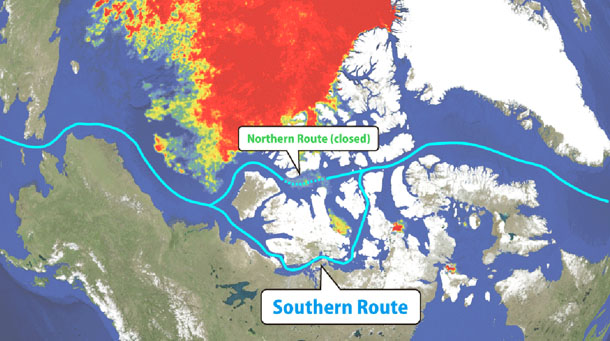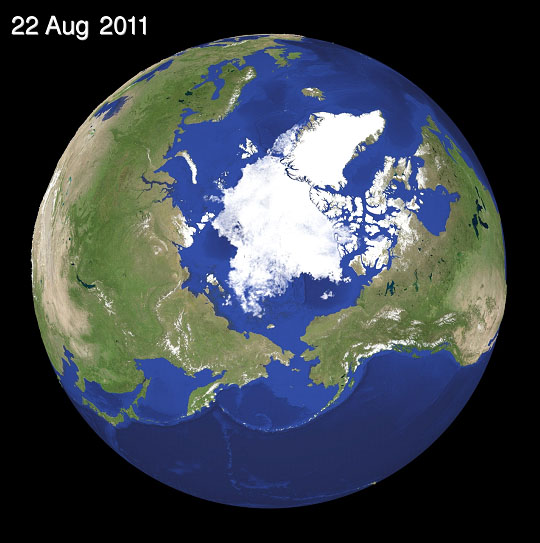2011.08.23
2011 GIC Weekly Report Vol.3
Both Passages Open, Earliest in History
Topics of the Week
Based on satellite imagery, we found that the Northwestern Passage opened on 18th August. Figure 1 shows the current sea ice distribution in the Canadian side of the Arctic
Sea, with routes of the Northwestern Passage. The passage, which goes through
the Canadian Arctic Archipelago and therefore has some branching points,
is mainly divided into the northern route and southern route. Now the southern
route is open, as the remaining ice on the route has melted in the Larsen
Sound.
As the Northeastern Passage remains open since its opening in early August, presently both of the passages are open in the Arctic. Although such simultaneous openings were also observed in 2008 and 2010, this summer recorded the earliest opening.
Sea ice in the Arctic Sea will continue melting until mid-September. Currently
its covered area is sufficiently small that it may hit the minimum extent
ever observed.
Sea Ice Extent
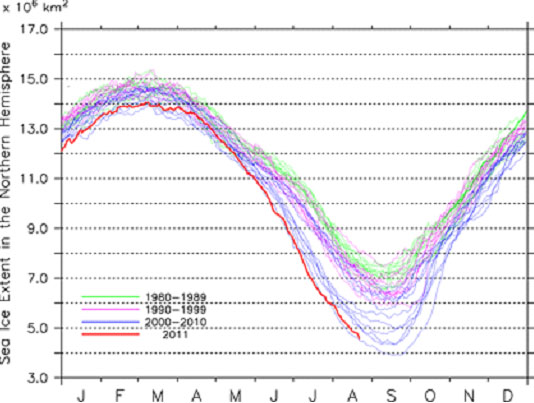
|
Arctic Western Arctic Eastern Arctic |
Figure 2a-2c. Sea ice extent of the entire Arctic(2a), western Arctic(2b), and eastern Arctic(2c).(Click to expand)
Figure 2a illustrates the daily sea ice extent in the entire Arctic, along with sea ice extent curves observed for the past 30 years. The Arctic sea ice extent as of 21 September is approximately 4.7 million square kilometers. This is the smallest since the minimum extent of 4.5 million square kilometers were observed in 2007. Sea ice has receded 300,000 square kilometers in the last week, and the ice recession is still continuing across the Arctic.
The sea ice extent in the western Arctic is about 2.7 million square kilometers, being the second lowest extent following the lowest extent of 2.6 million square kilometers in summer 2008 (Figure 2b). The sea ice extent in the eastern Arctic is about 2.0 million square kilometers, the second lowest extent on record (Figure 2c).
Figure3 shows the current sea ice distribution. In the western Arctic much ice has disappeared across the Canadian Arctic Archipelago, and most of ice remains are thin. On the eastern side, sea ice further receded in the East Siberian Sea and Laptev Sea. Even around the North Pole, decrease in ice concentration can be seen in some places.
Sea Ice Conditions along Polar Routes
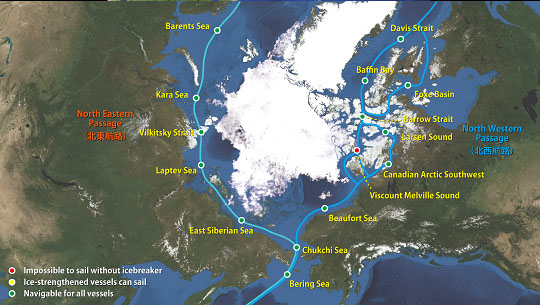
Fig. 4: Sea Ice Conditions along Northeastern/Northwestern passsages
Figure 4 shows the possibility of transiting the Northeastern Passage on the Siberian side and the Northwestern Passage on the Canadian side. In the last week, the southern route of the Northwestern Passage, which goes through Amundsen Gulf - Larsen Sound - Barrow Strait, became navigable for normal vessels. However, the northern route of the Northwestern Passage is still closed due to remaining ice in the Viscount Melville Strait. The Northeastern Passage continues to be open since 5th August.
I-SEE Model Predictions
Figure 5 shows sea ice distribution two weeks ahead, forecast by Weathernews's sea ice model (I-SEE-Engine). Although ice in the Arctic Sea will continue melting, its rate will be slower than observed in previous weeks. Along the Northwestern Passage, melting in the Canadian Arctic Archipelago may open the northern route of the passage. For the Northeastern Passage, more receding of ice in the East Siberian Sea will make the passage more navigable.
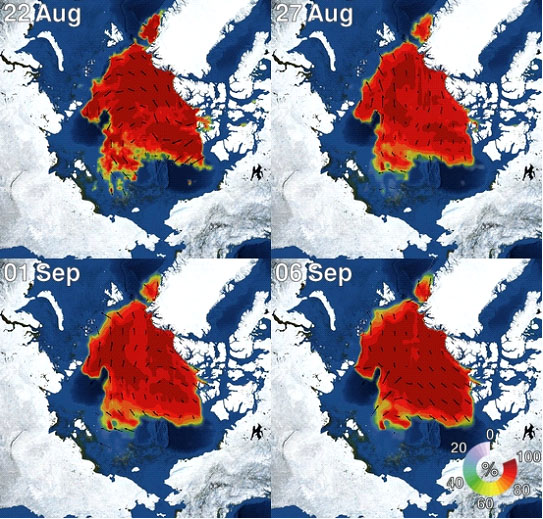
Fig 5: Sea Ice Prediction for the Arctic based on model data


